A Holistic Sustainability Assessment Method for Urban Food System Governance
Abstract
:1. Introduction
2. Materials and Methods
2.1. Model Setup
2.1.1. System Boundaries
2.1.2. Analytical Framework
2.1.3. Determination of the Degree of Goal Achievement
2.1.4. Indicator Selection and Weighting
2.1.5. Development of Interview Questions
2.2. Implementation of the Approach for Basel’s Urban Food System
2.2.1. Study Area
2.2.2. Identification of Structural Aspects of Basel’s Food System
2.2.3. Document Analysis
2.2.4. Interviews with Public or Public-Private Canteen Managers
2.2.5. Interviews with Public Administration Representatives
2.2.6. Interview with Representatives from Food-Related Civil Society Initiatives
2.2.7. Interviews with Soup Kitchen Representatives
2.2.8. Interviews with Farmers’ Market Sellers
2.2.9. Calculation of Indicator Ratings and DGAi
3. Results
3.1. Assessment Model
3.1.1. Analytical Framework
3.1.2. Indicators
3.2. Assessment of Basel’s Urban Food System Governance
3.2.1. Good Governance
3.2.2. Environmental Integrity
3.2.3. Economic Resilience
3.2.4. Social Well-Being
4. Discussion
4.1. Assessment Model
4.1.1. Analytical Framework
4.1.2. Indicators
4.2. Assessment of Basel’s Urban Food System Governance
5. Conclusions
Supplementary Materials
Acknowledgments
Author Contributions
Conflicts of Interest
References
- United Nations, Department of Economic and Social Affairs. Population Division World Urbanization Prospects: The 2014 Revision; United Nations, Department of Economic and Social Affairs: New York, NY, USA, 2015. [Google Scholar]
- Grimm, N.B.; Faeth, S.H.; Golubiewski, N.E.; Redman, C.L.; Wu, J.G.; Bai, X.M.; Briggs, J.M. Global change and the ecology of cities. Science 2008, 319, 756–760. [Google Scholar] [CrossRef] [PubMed]
- McKinney, M.L. Urbanization, biodiversity, and conservation. Bioscience 2002, 52, 883–890. [Google Scholar] [CrossRef]
- Godfray, H.C.J.; Crute, I.R.; Haddad, L.; Lawrence, D.; Muir, J.F.; Nisbett, N.; Pretty, J.; Robinson, S.; Toulmin, C.; Whiteley, R. The future of the global food system. Philos. Trans. R. Soc. B Biol. Sci. 2010, 365, 2769–2777. [Google Scholar] [CrossRef] [PubMed]
- Satterthwaite, D.; McGranahan, G.; Tacoli, C. Urbanization and its implications for food and farming. Philos. Trans. R. Soc. B 2010, 365, 2809–2820. [Google Scholar] [CrossRef] [PubMed]
- Dixon, J.; Omwega, A.M.; Friel, S.; Burns, C.; Donati, K.; Carlisle, R. The Health Equity Dimensions of Urban Food Systems. J. Urban Health 2007, 84, 118–129. [Google Scholar] [CrossRef] [PubMed]
- Pothukuchi, K.; Kaufman, J.L. Placing the food system on the urban agenda: The role of municipal institutions in food systems planning. Agric. Hum. Values 1999, 16, 213–224. [Google Scholar] [CrossRef]
- Blay-Palmer, A. The Canadian Pioneer: The Genesis of Urban Food Policy in Toronto. Int. Plan. Stud. 2009, 14, 401–416. [Google Scholar] [CrossRef]
- Morgan, K. Nourishing the city: The rise of the urban food question in the Global North. Urban Stud. 2015, 52, 1379. [Google Scholar] [CrossRef]
- Wiskerke, J.S.; Viljoen, A. Sustainable Urban Food Provisioning: Challenges for Scientists, Policymakers, Planners, and Designers. In Sustainable Food Planning: Evolving Theory and Practice; Wageningen Academic Publishers: Wageningen, The Netherlands, 2012. [Google Scholar]
- Milan Urban Food Policy Pact. Available online: http://www.foodpolicymilano.org/en/urban-food-policy-pact-2/?platform=hootsuite (accessed on 20 March 2017).
- Blay-Palmer, A.; Renting, H.; Dubbeling, M. City-Region Food Systems. A Literature Review; RUAF Foundation: Leusden, The Netherlands, 2015. [Google Scholar]
- Prosperi, P.; Moragues-Faus, A.; Sonnino, R.; Devereux, C. Measuring Progress Towards Sustainable Food Cities: Sustainability and Food Security Indicators—Report of the ESRC Financed Project “Enhancing the Impact of Sustainable Urban Food Strategies ”. Available online: http://sustainablefoodcities.org/getstarted/developingindicators (accessed on 20 March 2017).
- Department for Environment, Food and Rural Affairs (DEFRA). Indicators for a Sustainable Food System; DEFRA: York, UK, 2011.
- Gustafson, D.; Gutman, A.; Leet, W.; Drewnowski, A.; Fanzo, J.; Ingram, J. Seven Food System Metrics of Sustainable Nutrition Security. Sustainability 2016, 8, 196. [Google Scholar] [CrossRef]
- Ellsworth, S.; Feenstra, G. Assessing the San Diego County Food System: Indicators for A More Food Secure Future; Sustainable Agriculture Research and Education Program, and Agricultural Sustainability Institute: Davis, CA, USA, 2010. [Google Scholar]
- DPVRC. Greater Philadelphia Food System Assessment Study; Delaware Valley Regional Planning Commission: Philadelphia, PA, USA, 2010. [Google Scholar]
- Carey, J. Who Feeds Bristol? Towards A Resilient Food Plan. Available online: https://www.fibl.org/fileadmin/documents/de/news/2015/SUPURBFOOD_Handout_A-resilient-food-system-plan-for-Bristol_Zurich_16Jan2015.pdf (accessed on 20 March 2017).
- Wascher, D.M.; Jeurissen, L.J.J.; Zasada, I.; Doernberg, A.; Piorr, A.; Sali, G.; Corsi, S.L.; Monaco, F.; Schmutz, U.; de Kroes, J.; et al. Tools & Methods. In Food Planning and Innovations for Sustainable Metropolitan Regions—Synthesis Report; Wascher, D.M., Kneafsey, M., Piorr, A., Eds.; Wageningen University Research: Wageningen, The Netherlands, 2015. [Google Scholar]
- Kremer, P.; DeLiberty, T.L. Local food practices and growing potential: Mapping the case of Philadelphia. Appl. Geogr. 2011, 31, 1252–1261. [Google Scholar] [CrossRef]
- Smeets, E.; Weterings, R. Environmental Indicators: Typology and Overview; European Environment Agency (EEA): Copenhagen, Denmark, 1999. [Google Scholar]
- Food and Agriculture Organization of the United Nations (FAO). SAFA Sustainability Assessment of Food and Agriculture Systems—Guidelines Version 3.0; Food and Agriculture Organization of the United Nations (FAO): Rome, Italy, 2014. [Google Scholar]
- Schader, C.; Grenz, J.; Meier, M.S.; Stolze, M. Scope and precision of sustainability assessment approaches to food systems. Ecol. Soc. 2014, 19, 42. [Google Scholar] [CrossRef]
- Dodgson, J.; Spackman, M.; Pearman, A.; Phillips, L. Multi-Criteria Analysis: A Manual. Available online: http://eprints.lse.ac.uk/12761/1/Multi-criteria_Analysis.pdf (accessed on 20 March 2017).
- Schader, C.; Baumgart, L.; Landert, J.; Muller, A.; Ssebunya, B.; Blockeel, J.; Weisshaidinger, R.; Petrasek, R.; Mészáros, D.; Padel, S.; et al. Using the Sustainability Monitoring and Assessment Routine (SMART) for the Systematic Analysis of Trade-Offs and Synergies between Sustainability Dimensions and Themes at Farm Level. Sustainability 2016, 8, 274. [Google Scholar] [CrossRef]
- Linstone, H.A.; Turoff, M. The Delphi Method: Techniques and Applications; Addison-Wesley Reading: Boston, MA, USA, 1975; Volume 29. [Google Scholar]
- Bundesamt für Statistik, Ständige Wohnbevölkerung nach Staatsangehörigkeitskategorie, Alter und Kantone (German Only). Available online: https://www.bfs.admin.ch/bfs/de/home/statistiken/bevoelkerung. assetdetail.252469.html (accessed on 4 November 2016).
- Kanton Basel-Stadt, Basel kompakt (German Only). Available online: http://www.statistik.bs.ch/haeufig-gefragt/basel-kompakt.html (accessed on 14 January 2017).
- Kanton Basel-Stadt, Betriebe in Basel-Stadt (German Only). Available online: http://www.aue.bs.ch/landwirtschaft/betriebe-basel-stadt.html (accessed on 4 November 2016).
- Bundesamt für Statistik, Arbeitsstätten und Beschäftigte nach Kanton, Wirtschaftsart und Grössenklasse (German Only). Available online: https://www.pxweb.bfs.admin.ch/Selection.aspx? px_language=de&px_db=px-x-0602010000_103&px_tableid=px-x-0602010000_103\px-x-0602010000_103.px&px_type=PX (accessed on 4 November 2016).
- Kanton Basel-Stadt, Beschäftigte (German Only). Available online: http://www.statistik.bs.ch/zahlen/tabellen/3-erwerbsleben/beschaeftigte.html (accessed on 4 November 2016).
- Kanton Basel-Stadt. Verfassung des Kantons Basel-Stadt, Stand 29.02.2016 (German Only); Kanton Basel-Stadt: Basel, Switzerland, 2016. [Google Scholar]
- Kanton Basel-Stadt. Nachhaltigkeitsbericht 2013 (German Only); Kanton Basel-Stadt: Basel, Switzerland, 2013. [Google Scholar]
- Schweizerisches Gesundheitsobservatorium. Gesundheitsreport Kanton Basel-Stadt. Standardisierte Auswertungen der Schweizerischen Gesundheitsbefragung 2012 und weiterer Datenbanken (Obsan Dossier 31) (German Only); Schweizerisches Gesundheitsobservatorium (Obsan): Neuchâtel, Switzerland, 2014. [Google Scholar]
- Kanton Basel-Stadt. Bericht der Geschäftsprüfungskommission des Grossen Rates des Kantons Basel-Stadt zum Jahresbericht 2014 Sowie Über Besondere Wahrnehmungen. (German Only); Kanton Basel-Stadt: Basel, Switzerland, 2015. [Google Scholar]
- Kanton Basel-Stadt. Bericht der Geschäftsprüfungskommission des Grossen Rates des Kantons Basel-Stadt zum Jahresbericht 2013 Sowie Über Besondere Wahrnehmungen. (German Only); Kanton Basel-Stadt: Basel, Switzerland, 2014. [Google Scholar]
- Kanton Basel-Stadt. Bericht der Geschäftsprüfungskommission des Grossen Rates des Kantons Basel-Stadt zum Jahresbericht 2012 Sowie Über Besondere Wahrnehmungen. (German Only); Kanton Basel-Stadt: Basel, Switzerland, 2013. [Google Scholar]
- Kanton Basel-Stadt. Bericht der Geschäftsprüfungskommission des Grossen Rates des Kantons Basel-Stadt zum Jahresbericht 2011 Sowie Über Besondere Wahrnehmungen. (German Only); Kanton Basel-Stadt: Basel, Switzerland, 2012. [Google Scholar]
- Kanton Basel-Stadt. Bericht der Geschäftsprüfungskommission des Grossen Rates des Kantons Basel-Stadt zum Jahresbericht 2010 Sowie Über Besondere Wahrnehmungen. (German only); Kanton Basel-Stadt: Basel, Switzerland, 2011. [Google Scholar]
- Kanton Basel-Stadt. Handbuch Tagesstrukturen der Volksschulen im Kanton Basel-Stadt (German Only); Kanton Basel-Stadt: Basel, Switzerland, 2013. [Google Scholar]
- Kanton Basel-Stadt. Verpflegung Für Tagesstrukturen Der Primarstufe Der Stadt Basel (German Only); Erziehungsdepartement des Kantons Basel-Stadt Volksschulen, Ed.; Kanton Basel-Stadt: Basel, Switzerland, 2014. [Google Scholar]
- Kanton Basel-Stadt. Jahresbericht 2015 (German Only); Kanton Basel-Stadt: Basel, Switzerland, 2016. [Google Scholar]
- Landwirtschaftliches Zentrum Ebenrain. Kurse & Weiterbildung 2015/2016 (German Only); Landwirtschaftliches Zentrum Ebenrain: Sissach, Switzerland, 2015. [Google Scholar]
- Kantonales Laboratorium Basel-Stadt. Jahresbericht 2014 (German Only); Kanton Basel-Stadt: Basel, Switzerland, 2015. [Google Scholar]
- Kantonales Laboratorium Basel-Stadt. Jahresbericht 2013 (German Only); Kanton Basel-Stadt: Basel, Switzerland, 2014. [Google Scholar]
- Kanton Basel-Stadt. Gesetz über öffentliche Beschaffungen (Beschaffungsgesetz), Stand 04.03.2010 (German ONLY); Kanton Basel-Stadt: Basel, Switzerland, 2010; Volume 914.100. [Google Scholar]
- Kanton Basel-Stadt. Verordnung Zum Gesetz Über Öffentliche Beschaffungen (Beschaffungsverordnung, VöB), Stand 01.01.2016 (German Only); Kanton Basel-Stadt: Basel, Switzerland, 2016; Volume 914.110. [Google Scholar]
- Kanton Basel-Stadt. Gesetz Betreffend Die Beauftragte/den Beauftragten Für Das Beschwerdewesen (Ombudsfrau/Ombudsmann) des Kantons Basel-Stadt, Stand 28.04.2013 (German Only); Kanton Basel-Stadt: Basel, Switzerland, 2013; Volume 152.900. [Google Scholar]
- Pensionskasse Basel-Stadt. Anlagereglement (German Only); Pensionskasse Basel-Stadt: Basel, Switzerland, 2015. [Google Scholar]
- Urban Agriculture Basel: Alle Projekte. Available online: http://urbanagriculturebasel.ch/project_category/projekte/ (accessed on 28 October 2016).
- Kamau, E.C.; Fedder, B.; Winter, G. The Nagoya Protocol on access to genetic resources and benefit sharing: What is new and what are the implications for provider and user countries and the scientific community? Law Dev. J. (LEAD) 2010, 6, 248–263. [Google Scholar]
- Wiskerke, J.S.C. On Places Lost and Places Regained: Reflections on the Alternative Food Geography and Sustainable Regional Development. Int. Plan. Stud. 2009, 14, 369–387. [Google Scholar] [CrossRef]
- Knigge, L.; Brimlow, J.N.; Metcalf, S.S. Food Hubs: Connecting Farms with Local and Regional Markets. In Urban Sustainability: Policy and Praxis; Gatrell, J.D., Jensen, R.R., Patterson, M.W., Hoalst-Pullen, N., Eds.; Springer International Publishing: Cham, Switzerland, 2016; pp. 169–184. [Google Scholar]

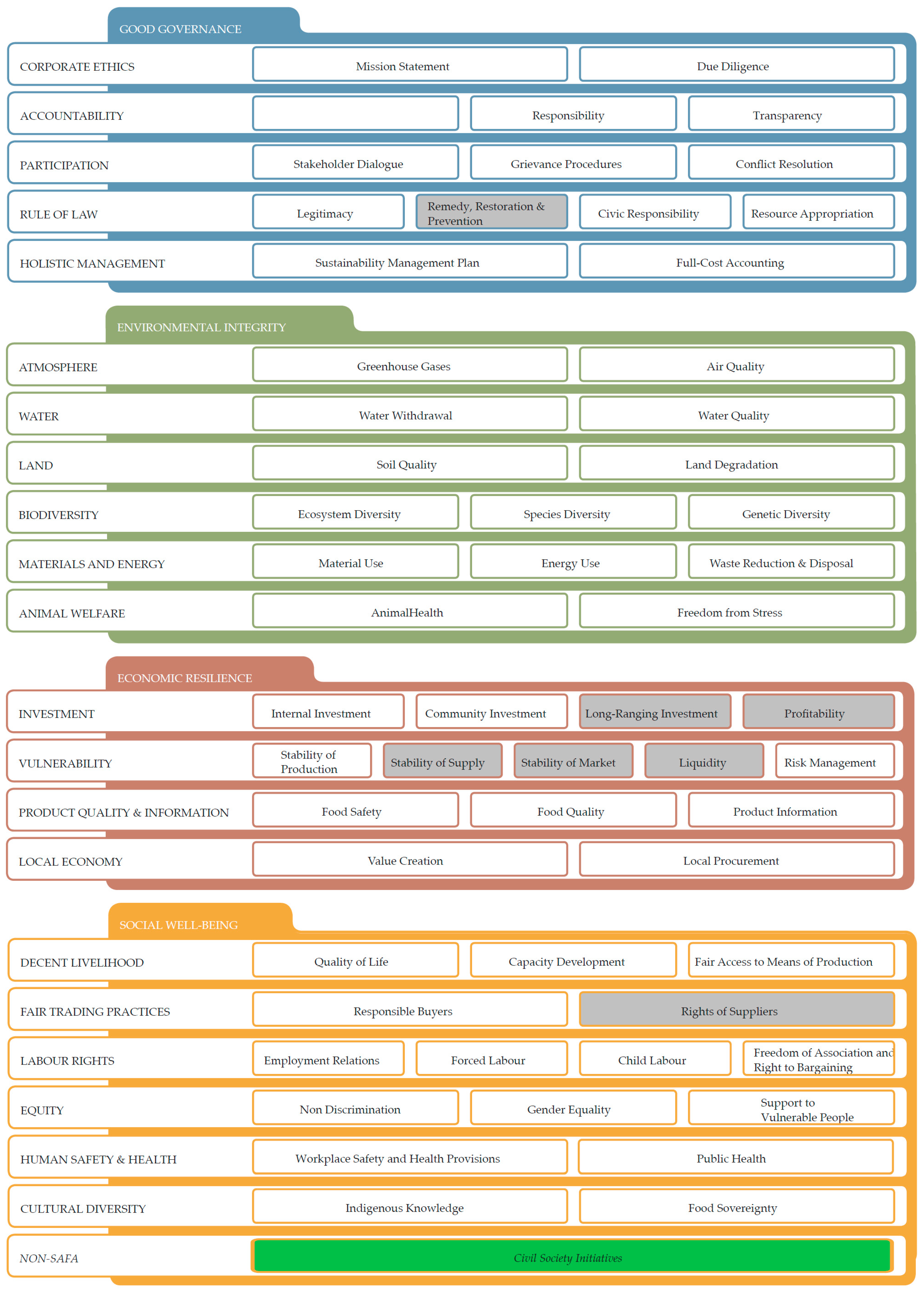

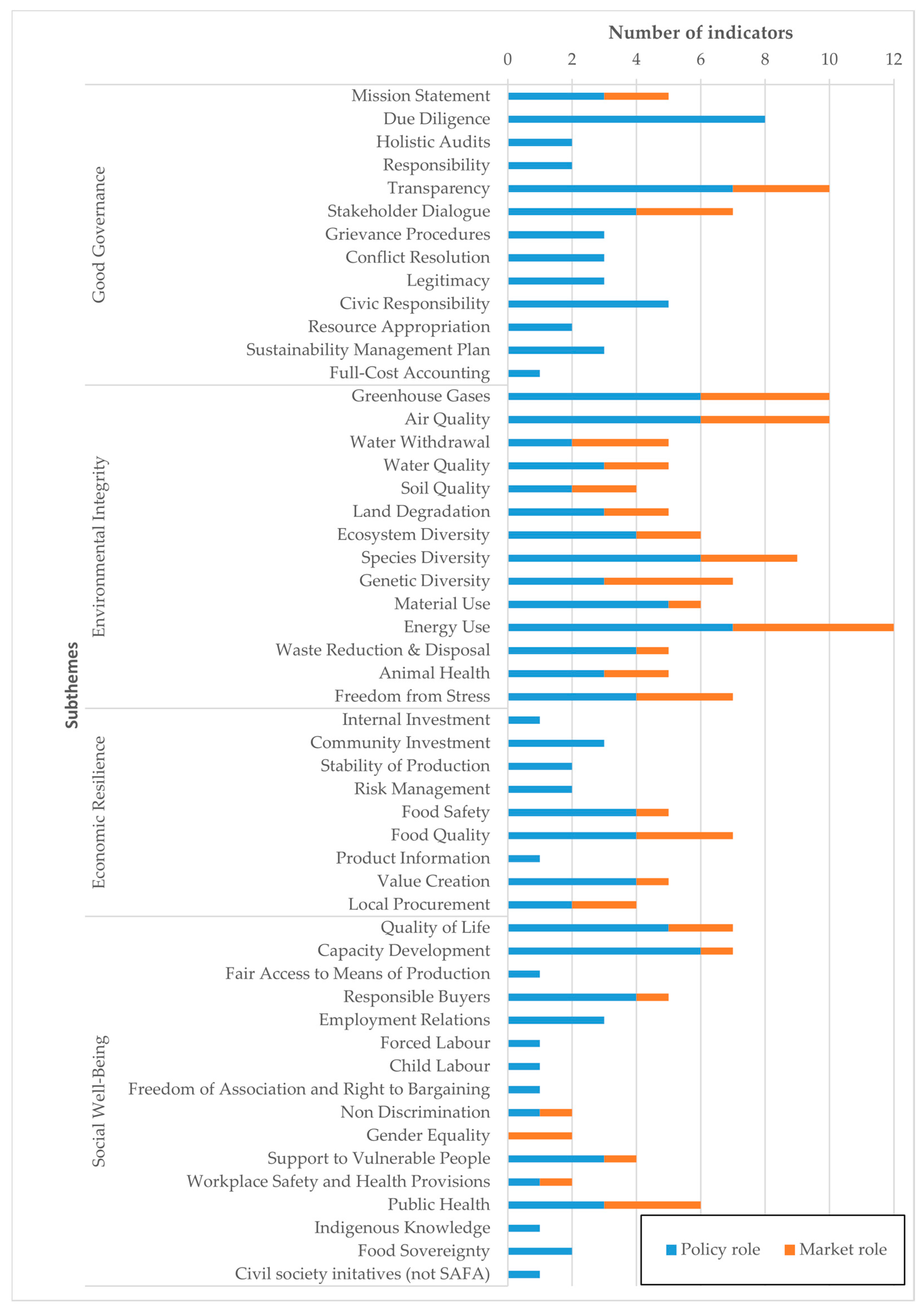

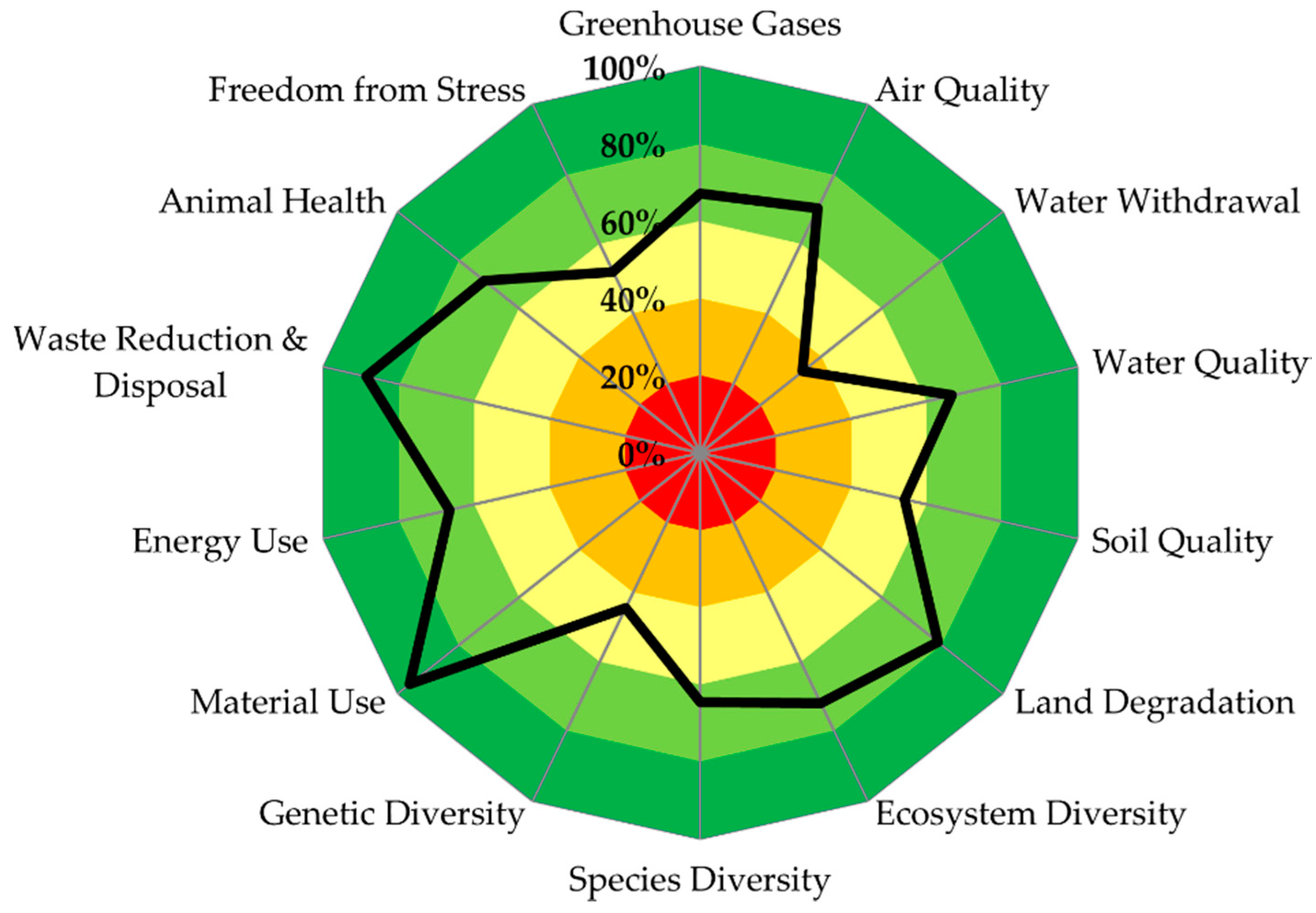
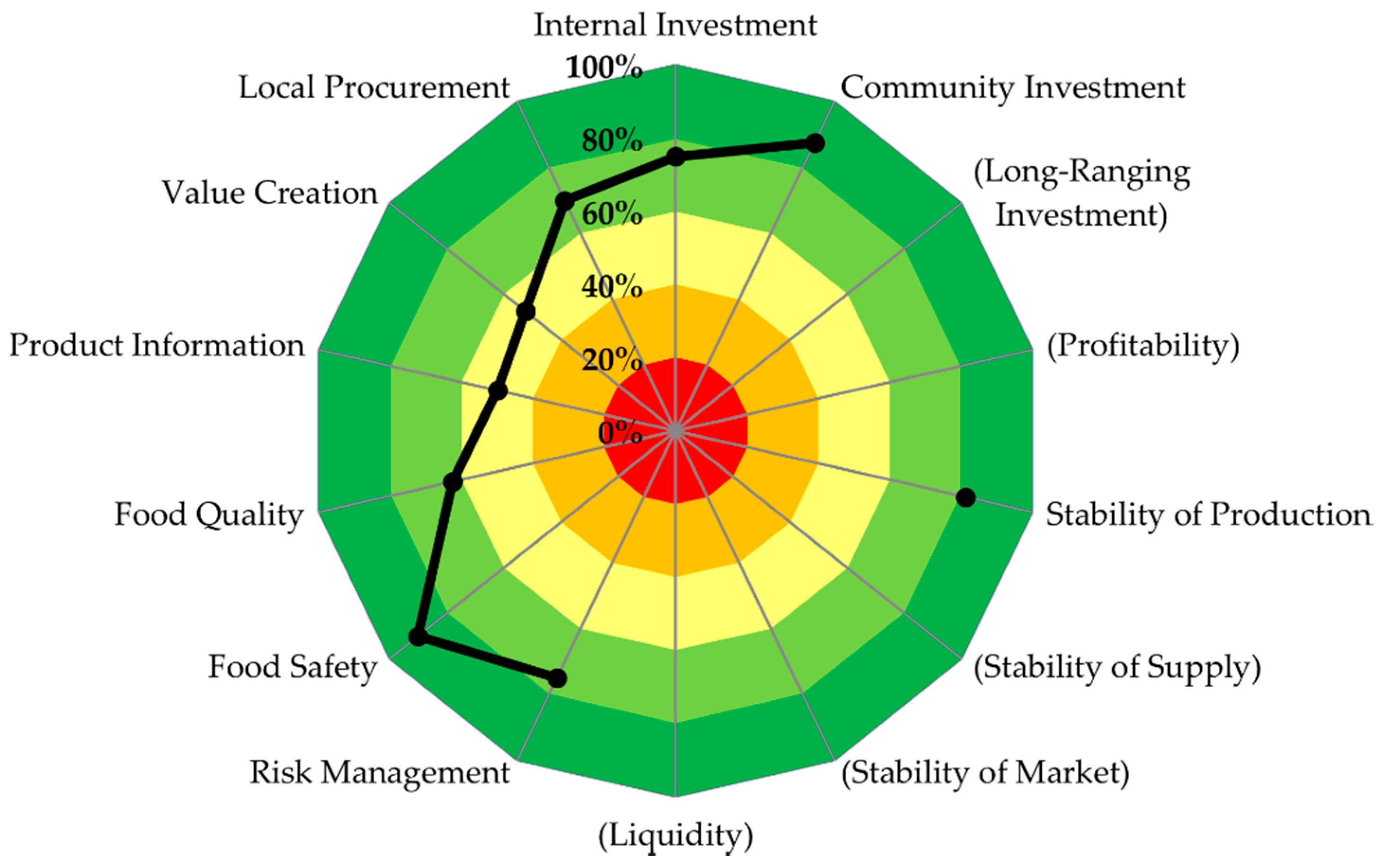
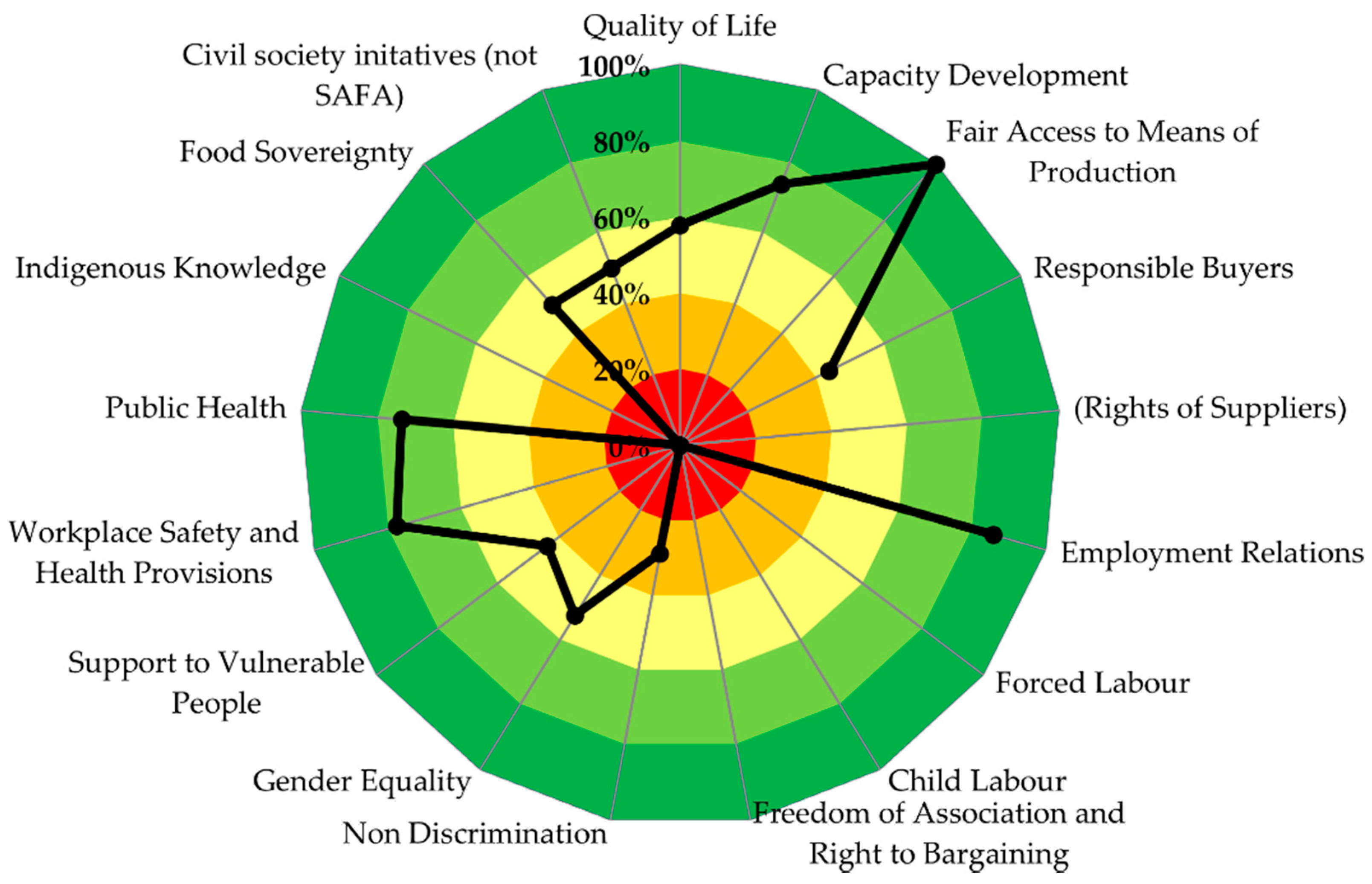
| Institutions (strata) | Number of Institutions/All-Day Schools Management Contractors | Canteens | Caterer (Including Public Caterer) | Unique Combinations (Institution/Contractor–Caterer) |
|---|---|---|---|---|
| Universities (of applied sciences) | 2 | 9 | 2 | 2 |
| Secondary level II schools | 17 | 25 | 3 | 8 |
| Kindergarten—secondary level I schools (all-day schools) | 7 | 36 | 14 | 20 |
| Kindergarten—secondary level I schools (additional out of school catering; non all-day schools) | 17 | 25 | 17 | 21 |
| Administration | 1 | 1 | 1 | 1 |
| Public-law companies | 1 | 1 | 1 | 1 |
| Hospitals | 5 | 8 | 7 | 7 |
| Private-public nursing homes | 7 | 7 | 7 | 7 |
© 2017 by the authors. Licensee MDPI, Basel, Switzerland. This article is an open access article distributed under the terms and conditions of the Creative Commons Attribution (CC BY) license (http://creativecommons.org/licenses/by/4.0/).
Share and Cite
Landert, J.; Schader, C.; Moschitz, H.; Stolze, M. A Holistic Sustainability Assessment Method for Urban Food System Governance. Sustainability 2017, 9, 490. https://doi.org/10.3390/su9040490
Landert J, Schader C, Moschitz H, Stolze M. A Holistic Sustainability Assessment Method for Urban Food System Governance. Sustainability. 2017; 9(4):490. https://doi.org/10.3390/su9040490
Chicago/Turabian StyleLandert, Jan, Christian Schader, Heidrun Moschitz, and Matthias Stolze. 2017. "A Holistic Sustainability Assessment Method for Urban Food System Governance" Sustainability 9, no. 4: 490. https://doi.org/10.3390/su9040490





